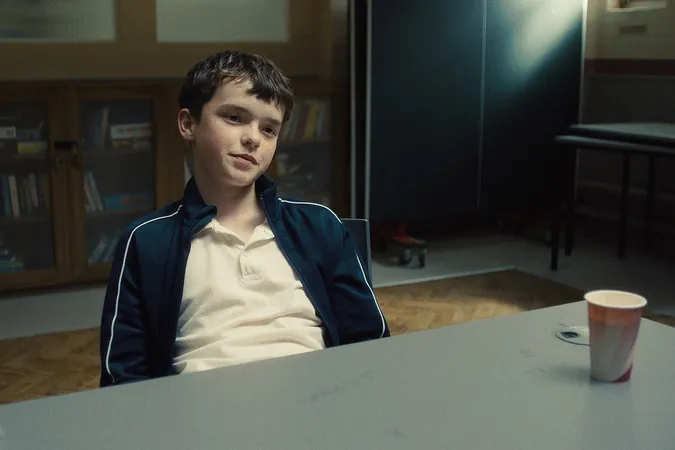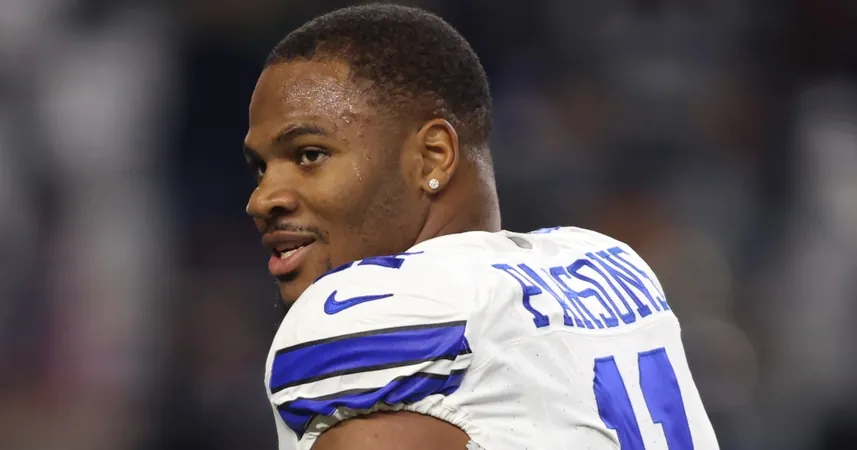
Adolescence: The Netflix Series Igniting Controversy and Conversations in the U.K.
2025-04-05
Author: Wei
Introduction
Netflix's latest sensation, *Adolescence*, a four-part series centering on the chilling narrative of a 13-year-old boy named Jamie who is arrested for the murder of a girl at his school, has taken the U.K. by storm, becoming one of the platform's most-viewed series in record time. In a stunning turn of events, it surpassed *Stranger Things Season 3* within just 17 days of its debut. But what’s driving the buzz around this show?
Production Quality and Themes
The answer lies not only in its production quality but also in its profound and unsettling themes. Each episode is filmed in a single, gripping take, showcasing stellar performances from rising actor Owen Cooper, who portrays Jamie, and Stephen Graham, both of whom contributed to the series' writing. The narrative confronts the harrowing realities of youth in a digital age, scrutinizing the societal influences that may lead a seemingly innocent child to commit such a grave act of violence. A significant component of the story deals with the vitriolic culture of misogyny exacerbated by online platforms, making it a poignant reflection of contemporary issues faced by young people today.
Societal Context and Political Engagement
With rising incidents of knife crime in the U.K. and ongoing societal conversations about the impact of toxic masculinity, *Adolescence* resonates on multiple levels. Prime Minister Keir Starmer has publicly praised the show and engages his children in discussions sparked by its themes, which coincidentally aligns with his government’s efforts to enhance support systems such as adding specialized police teams to address sexual offenses. Furthermore, calls for the show to be screened in schools and Parliament have been championed by co-writer Jack Thorne, with growing public backing. This level of political engagement illustrates the urgency with which society is grappling with these critical discussions.
Backlash and Misinterpretations
However, it’s not merely a consensus of praise; the show has also incited backlash, particularly from figures in the manosphere. Right-wing commentators have claimed that *Adolescence* distorts reality in a bid to push an "anti-white" agenda, despite the writers clarifying their intention to reflect a wide range of incidents involving young men committing acts of violence against young women, irrespective of race. The retorts from those in the series echo the discrepancies between public discourse and the underlying social realities, drawing attention to the broader issues that plague our society.
Conclusion and Future Conversations
As *Adolescence* continues to fuel debates about youth violence and misogyny, it raises a pressing question: Is it appropriate for a Netflix series to shoulder the burden of sparking such significant conversations? While the series undeniably shines a spotlight on urgent issues, the complexities surrounding them stretch far beyond the realm of entertainment. The responsibilities lie scattered across various pillars of society—from parents and educational institutions to government entities and social media platforms. It is commendable that the dialogue around these pressing issues is being reignited, but it shouldn't solely hinge on a television series. Art has a potent ability to reflect, provoke, and catalyze change. Yet, the responsibility to address the changing dynamics of youth culture and societal norms must be shared and embraced collectively rather than leaving it in the court of a streaming service. *Adolescence* is an extraordinary show, but it’s clear that the societal implications it reveals should lead to concrete actions—not just discussions sparked by TV screen! Will the conversations continue beyond the screen? The world is watching as these important dialogues unfold.





 Brasil (PT)
Brasil (PT)
 Canada (EN)
Canada (EN)
 Chile (ES)
Chile (ES)
 Česko (CS)
Česko (CS)
 대한민국 (KO)
대한민국 (KO)
 España (ES)
España (ES)
 France (FR)
France (FR)
 Hong Kong (EN)
Hong Kong (EN)
 Italia (IT)
Italia (IT)
 日本 (JA)
日本 (JA)
 Magyarország (HU)
Magyarország (HU)
 Norge (NO)
Norge (NO)
 Polska (PL)
Polska (PL)
 Schweiz (DE)
Schweiz (DE)
 Singapore (EN)
Singapore (EN)
 Sverige (SV)
Sverige (SV)
 Suomi (FI)
Suomi (FI)
 Türkiye (TR)
Türkiye (TR)
 الإمارات العربية المتحدة (AR)
الإمارات العربية المتحدة (AR)